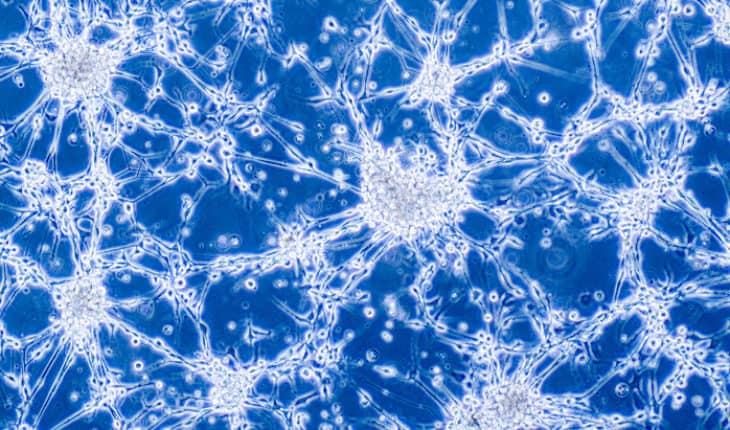Glioblastoma and Autism: In accordance with the blueprint contained in our DNA, human cells produce proteins that perform specific functions. An essential step in this process is the reading of the DNA and the transcription of the information into mRNA.
A multi-centre study with significant participation from MedUni Vienna has now shown for the first time that a specific protein, PHF3, plays an important role in transcription: its binding to the enzyme RNA polymerase II (POL II) modulates the reading process. PHF3 binds to POL II via a specific site on its surface called the SPOC domain. If SPOC is defective or absent, PHF3 cannot bind, and neuronal production defects occur. This could be one of the causes of autism and glioblastoma. The study has now been published in the renowned journal Nature Communications.
The paper focusses on the protein PHF3. It was known that autistic people often exhibit mutations in PHF3 and that only very low levels of PHF3 are found in glioblastomas (the most common type of malignant brain tumour).
The study leader is Dea Slade, a molecular biologist at Max Perutz Labs (a joint venture between the Medical University of Vienna and the University of Vienna) and, since September 2021, at the Department of Radiation Oncology of MedUni Vienna and Vienna General Hospital, as well as a member of the Comprehensive Cancer Center of the two institutions. She explains: “In the paper, we were not only the first research team in the world to demonstrate that PHF3 is a transcription factor and that it binds to POL II via the SPOC domain but we were also able to show that the protein significantly influences neuronal differentiation, through the SPOC domain. If the protein was missing, neurons could not be formed, suggesting a correlation between the absence of PHF3 or SPOC and the development of autism and glioblastoma.”
Comprehensive study
The study was performed on cell lines and was carried out from different angles. Slade explains: “We studied the biochemical interaction of PHF3 or SPOC with POL II as well as its interaction at the cellular level, that is to say how the protein affects cellular function. Last but not least, we also looked at the level of differentiation, that is, how the cellular network is affected. This gives us a very detailed insight into the role that PHF3 plays in neuronal cell development.”.
In order to obtain results that are applicable humans, in a next step the team would like to test their findings in an animal model.
The paper resulted from a joint project conducted by Max Perutz Labs, the Max Delbrück Center in Berlin, the Central European Institute of Technology of Masaryk University in Brno, the Research Institute of Molecular Pathology (IMP), the Institute of Molecular Biotechnology (IMBA) and the Institute of Science and Technology (IST Austria).
Service: Nature Communications
“PHF3 regulates neuronal gene expression through the Pol II CTD reader domain SPOC”. Lisa-Marie Appel, Vedran Franke, Melania Bruno, Irina Grishkovskaya, Aiste Kasiliauskaite, Tanja Kaufmann, Ursula E. Schoeberl, Martin G. Puchinger, Sebastian Kostrhon, Carmen Ebenwaldner, Marek Sebesta, Etienne Beltzung, Karl Mechtler, Gen Lin, Anna Vlasova, Martin Leeb, Rushad Pavri, Alexander Stark, Altuna Akalin, Richard Stefl, Carrie Bernecky, Kristina Djinovic-Carugo & Dea Slade.NATURE COMMUNICATIONS, https://doi.org/10.1038/s41467-021-26360-2
- New lipid-based pathway discovered as key to memory formation - 25th June 2025
- Crucial link could explain how Alzheimer’s takes hold - 25th June 2025
- Understanding Your Mind Can Improve Daily Life - 25th June 2025







